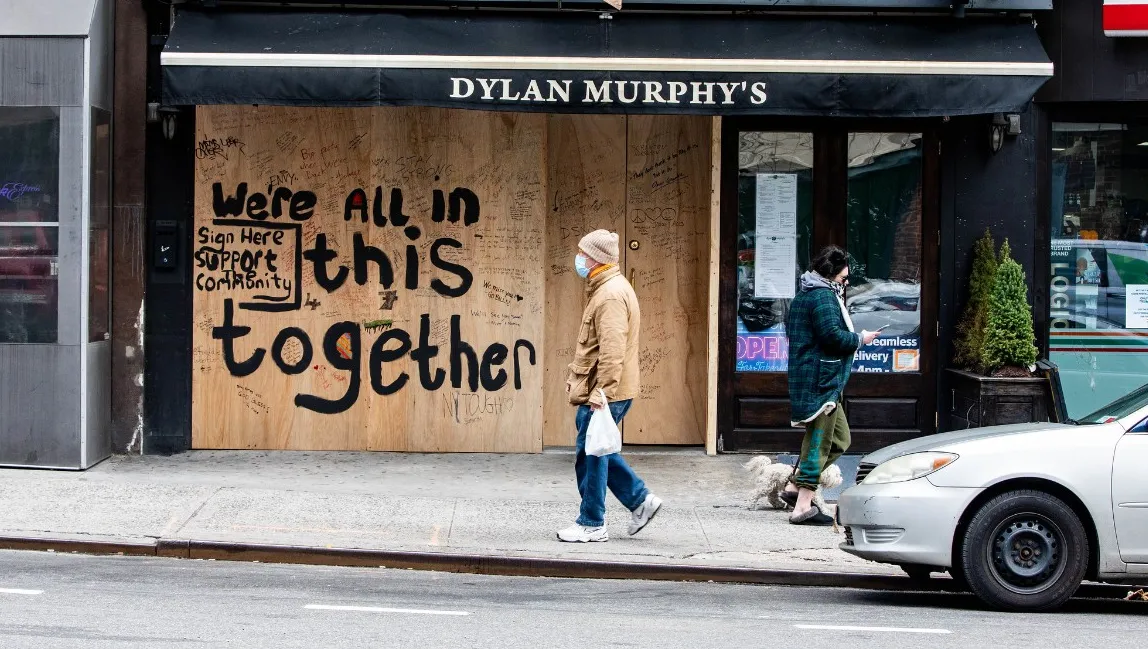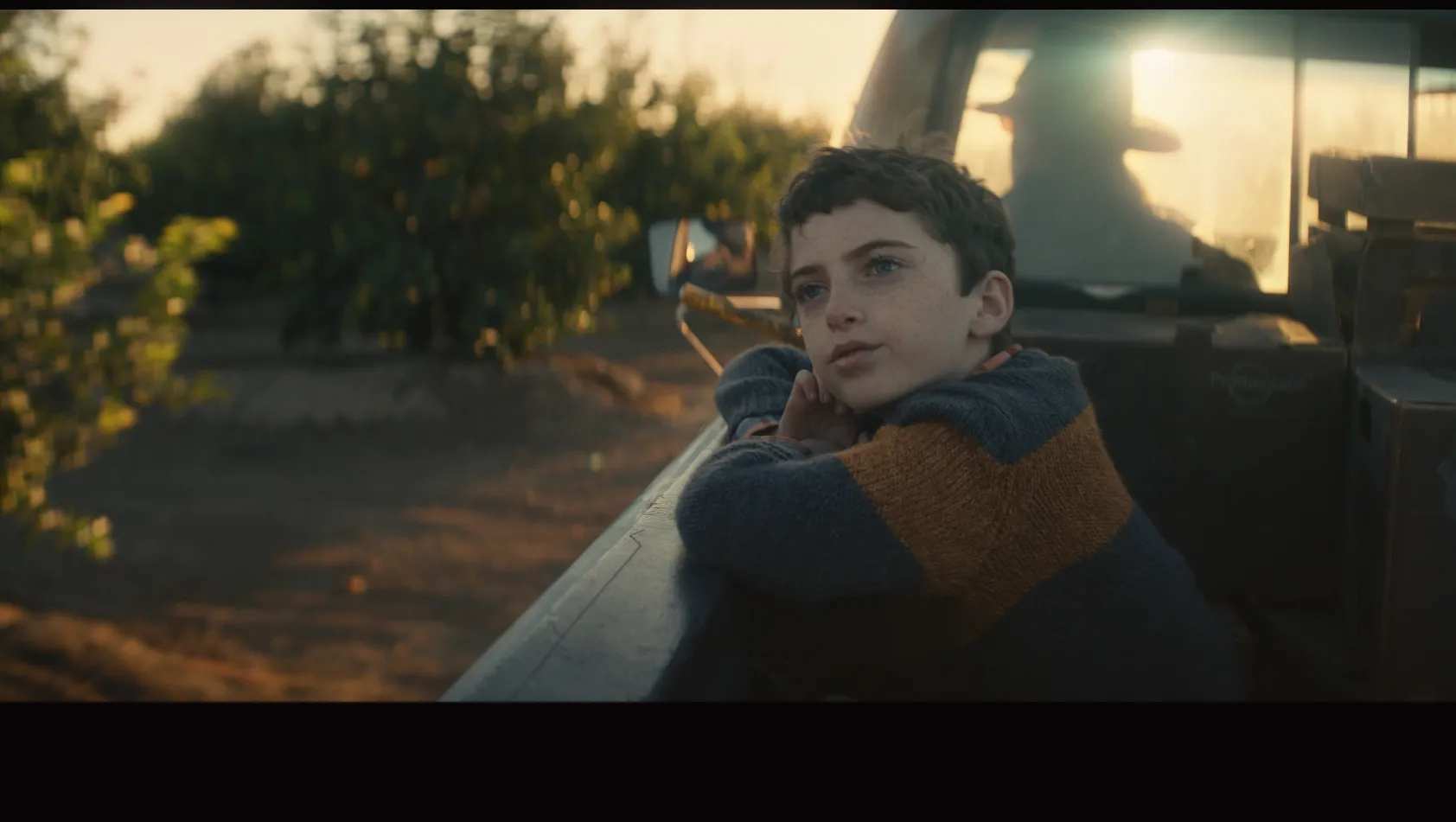
8 marketing trends to watch for in 2021 as aftereffects of a volatile year linger
Even as vaccine developments provide a clearer timeline for a pandemic recovery, 2021 is set to be another volatile year for marketers. If anything, the digital ecosystem is primed for a bigger shakeup as Apple's controversial tracking changes go into effect, multiple Big Tech antitrust suits take shape and Google formally starts to sunset third-party cookies.
On the consumer end, marketers must contend with a fractious public that remains sour over the thorniest presidential race in modern memory. Chief marketing officers, put through a ringer of a year marked by a brutal health crisis and mass protests for racial justice, will need to balance purpose-minded tendencies with intensified mandates around areas like data and commerce — all on shorter timelines than in the past.
"[2020] did potentially stretch people beyond what they thought they had in them, and now that can carry over into a year where maybe things slow down a little bit," said Beth Superfin, senior vice president of client experience at the agency Known. "The notion of being able to plan out past a certain time is done."
New tensions are apparent in the tech sector as well, as Facebook and Apple duke it out over the latter's plans to require opt-in consent to its Identifier for Advertisers (IDFA), a policy change Facebook says will kill free apps. The public spat is emblematic of a shifting balance of power in the media sphere. Elsewhere, digital channels like streaming and gaming have become enshrined as consumer favorites by the pandemic, while traditional media gatekeepers experience a steep downgrade from which they may not recover.
While hope is on the horizon in combating COVID-19, brands will continue to feel pressure to fill in the gaps during a patchwork recovery. Below, Marketing Dive breaks down eight trends that will reshape the industry in 2021 as the aftereffects of an unprecedented year cast a long shadow.
One step forward, two steps back for fixing digital complexity
Outside of pandemic demands, marketers made one item a top priority in 2020: first-party data. As cookies and mainstay methods of in-app tracking go the way of the dinosaur, forging a personal connection with consumers has become essential, but will prove more challenging than conducting digital marketing the old way.
"It was definitely simpler to collect that [third-party] data," said Raphael Ravilla, partner of media and connections planning at Marcus Thomas. "It's going to be harder to collect first-party data that's authenticated and whatnot, but it's going to: 1.) make marketers try harder to get that data, but 2.) it's also going to be cleaner data than what we were using."
Marketers face no shortage of options in picking from partners and solutions. Even as the antitrust hammer lands on Google and Facebook, the duopoly faces a fresh crop of competition in apps like TikTok and a proliferation of retail media networks from companies including Walmart, Target, Walgreens and Kroger.
"It creates much-needed competition in the ecosystem when we see other brands and companies coming out with platforms of their own," said Orchid Richardson, vice president of global partnerships and product marketing at the IAB Tech Lab. "That's all really positive because competition drives innovation."
But if greater choice in advertising platforms ultimately benefits the industry, it also requires dealing with more gatekeepers.
"It used to be Facebook and our [demand-side platform]," Ravilla said. "Now, it's Facebook, our DSP, plus anyone else who has their own walled garden ... But again, the data's better."
Similarly, ad-tech firms and media companies are vying to create the true alternative to the cookie — the list includes Lotame, The Trade Desk and Verizon, to name a few. While the prospect of forging fresh standards for online advertising is exciting, marketers might need to keep more balls in the air — and grow more selective about their partners.
"It definitely creates unnecessary complexity," Richardson said. "If everyone has their own solution, then it becomes harder to transact media across platforms, across media types."
Internally and externally, an activist mindset should stick
Proclamations of "Black Lives Matter" from the corporate sector cooled as the protests that inspired them grew less frequent in 2020. But last year's swelling civil rights movement reset the equation for what's expected of brands on the purpose front, both in terms of consumer-facing messages and in their internal practices.
"It only takes, unfortunately, one more thing happening — one more event that falls under the title of police brutality or racism in a systemic way — for that to really come surging back," said Lindsey Roeschke, a director analyst at Gartner.
Many companies that chimed in on the protests were caught flat-footed when consumers did the homework and exposed poor hiring track records or problematic pasts, leading to a reckoning with racist corporate mascots. Marketers have taken important steps to remedy those issues, but a broader overhaul of marketing to be more authentic and representative will be an ongoing project for the industry in 2021 and beyond.
"Despite this next administration having more progressive or liberal views, it still won't take the pressure off of brands from a consumer perspective."

LaToya Robertson
Cultural strategy director, Sparks & Honey
"This is actually the time for brands to be putting all the building blocks in place to be able to agilely respond to those sorts of things," Roeschke said. "The expectation is going to be there and to be taking a stand and playing a part in making the world a better place."
Making the world a better place carries new considerations in the wake of the pandemic as economic inequity and food insecurity are amplified, adding to existing concerns around sustainability, diversity and inclusion. Though the Biden administration is looking to prioritize progressive issues, brands should be thinking of ways to fill the gaps where other institutions fail.
"Despite this next administration having more progressive or liberal views, it still won't take the pressure off of brands from a consumer perspective," said LaToya Robertson, cultural strategy director at the consultancy Sparks & Honey.
"It actually is a balancing act," Robertson said. "There are ways for brands to speak to areas in a way that brings people together rather than fueling the polarization or the divisiveness."
Spread-thin CMOs seize on leadership opportunities
E-commerce, data acquisition, timely messaging and accounting for internal diversity initiatives are just a handful of duties CMOs took greater responsibility over in 2020. The pull in multiple directions has been draining, but also a proving ground for the frequently embattled C-suite appointment to stake out a larger claim in leadership.
"It's a little bit overwhelming when you think about all that needs to be accomplished," said Laura Chiavone, managing partner of business transformation at Sparks & Honey. "At the same time, I think this is a unique opportunity, different from years past, for CMOs to really be part of the transformation of the organization."
"The notion of agility, not just in someone's personal characteristics, but also how they plan and market, will become much more of a norm."

Beth Superfin
Senior vice president of client experience, Known
The task ahead in 2021 remains daunting, as shorter planning and production schedules become the norm. And despite escalating technology demands, CMOs in 2021 should also anticipate reduced media budgets, fewer internal resources and less reliance on agencies and ad-tech companies, Forrester Research forecasts. HR-adjacent functions will also bleed into the CMO role as brands look to live up to messages shared in their purposeful advertising.
"The issues that are important to consumers are going to be the issues that are going to be important to employees as well," Gartner's Roeschke said. "How do you balance the willingness or ability to take a stand with all of the other things that you need to be doing as a CMO?"
That being said, the muscles built up in the gauntlet in 2020 will help savvy marketers stand out from the pack and guide their organizations into a new era.
"The notion of agility, not just in someone's personal characteristics, but also how they plan and market, will become much more of a norm," Known's Superfin said.
Balancing flexibility with long-term brand growth
Marketers historically map out campaigns months in advance, with bigger brand refreshes often taking a year or longer. COVID-19 bulldozed that practice, forcing brands to adapt by tweaking or axing entire campaigns on a dime. As 2020 played out, businesses across categories assembled fresh creative at lightning speed to ensure their campaigns matched the moment and aligned with consumers' rapidly shifting attitudes.
But as shorter planning and production schedules become the norm into 2021 and beyond, how can marketers adjust their campaigns and priorities on the fly while building on their longer-term brand equity?
"To meet this demand, marketing leaders must identify what truly matters most, create a short set of criteria to prioritize each request and identify how best to address it," Lizzy Foo Kune, senior director analyst at Gartner, said in emailed comments. "Marketing leaders look to data and analytics teams to offer insight into current trends and uncertainties to avoid making errors in decision making and help chart a clear way forward."
General Motors stands out as one example for how major businesses in 2020 embraced flexibility to swiftly cultivate new partnerships in response to consumer needs. Within 18 days, the company behind brands like Cadillac and Chevrolet evolved its operations — including within its marketing department — to help medical device firm Ventec Life Systems manufacture ventilators.
Other brands in 2020 reacted by tweaking messaging and using consumer data to inform campaign development. The ability for these brands to be more agile is vital for longer-term growth and will only materialize if marketers leverage predictive insights, according to Acquia CMO Lynne Capozzi.
"They should focus on making real-time use of customer data and content across all touch points to create experiences that provide strong value or strengthen an emotional connection to a brand," she said.
The evolving roles of brand spokespeople
A confluence of pandemic effects altered the role played by celebrities and influencers in their brand partnerships. The rise of influencers continued as brands sought partners who could elevate campaigns and deliver authentic, value-driven content, as the pandemic and the movement for social justice changed consumer behaviors — a trend likely to persist beyond 2021.
"Microinfluencers will continue to have more influence over lower-funnel activities like purchase and consideration," Jessica Bedussi, associate social strategy director at ad agency Muh-Tay-Zik / Hof-Fer, said over email. Beudssi noted that influencers with larger followings have even greater impact, pointing to Dunkin's tie-up with TikTok star Charli D'Amelio that led to a 57% increase in app downloads and 20% lift in cold brew sales. However, brands must be careful they're not valuing social media metrics over actual social networks.
"Reach does not necessarily mean influence," said Nic Allum, principal and senior vice president at creative agency the projects*.
That search for actual consumer influence is part of the renewed importance of celebrity partnerships. As the pandemic scuttled film and TV production, celebrity creatives had both time on their hands and financial needs that were increasingly met by brand partnerships. That could continue in 2021 until the vaccine is widely available and distributed.
"People that have that iconic status are going to keep commanding a larger share [of brand partnerships], and get more strategic as well. If you can't meet their quote, they'll start their own brand," said Josh Greenberg, managing director of creative agency Caveat.
But celebrity brand partnerships must meet the moment, whether that means coronavirus concerns, economic realities facing most consumers, racial justice or whatever else 2021 has in store.
"To be completely out of touch and tone deaf to what's happening is going to damage your brand," Allum warned.
Unlike Stories and TikTok-like videos, campaigns can't be copycats
After disrupting the marketing world in 2019, TikTok's rise continued in 2020, even as the app's U.S. operations were threatened by the Trump administration. As with Snapchat before it, social platforms raced to adopt TikTok's functionality — especially as the ByteDance-owned app faced an existential crisis. Copycat features were tested, acquired or rolled out by Facebook's Instagram, YouTube, Reddit and even Snap, while competitor Triller picked up momentum as a marketing platform as the year closed.
However, the surge in TikTok-like videos across social media — along with the ever-growing list of platforms that have copied Snapchat's popular Stories feature — does not necessarily streamline the work marketers must do to reach audiences who have overwhelmingly engaged with these formats.
"We strongly recommend that creative be customized for each platform because the user experience is so different ... we see the most success when marketers really tailor their creative to fit the environment," said Evan Horowitz, CEO and co-founder of Movers+Shakers, an agency that has worked extensively on TikTok.
Horowitz suggests that marketers not just understand the different consumer mindsets on each platform, but also work to translate their brand personalities in authentic ways by incorporating the different visual styles and cadences used on each platform. Plus, they must understand that part of the draw for consumers on TikTok and Triller is that they are not yet oversaturated with ads in the way mature platforms are, which presents a challenge for brands.
"There's still a massive amount of engagement and face time that people are giving to Stories," Horowitz said. "For marketers, you really want to balance the marketing mix to where consumers' eyeballs really are, and they're really enjoying Stories at the same time they're enjoying TikTok."
Connection, convenience and value will determine stickiness of behavior changes
The pandemic has fundamentally reshaped how consumers live, work, shop and play. COVID-driven behaviors such as attending virtual events and consuming digital media skyrocketed in popularity in 2020, rapidly accelerating underlying trends in the span of weeks. While some of these habit shifts will endure into 2021 and beyond, others may fizzle once the health crisis subsides.
Behavior changes are not linear, and their stickiness will depend on satisfaction of the experiences, according to a McKinsey report. Connection, convenience and value are three points that keep consumers coming back to a particular product or brand, pointing to key pillars marketers should focus on providing in 2021.
"A person's world does not revolve around a brand's product, service or website… People are only 'users' and 'consumers' for small portions of the day."

Peter Hartzbech
CEO, iMotions
Just as the pandemic proved how quickly consumer behavior can change, it also is pushing marketers to understand the broader human experience — not just the "user" or "consumer" experience, according to Peter Hartzbech, CEO of iMotions.
"A person's world does not revolve around a brand's product, service or website… People are only 'users' and 'consumers' for small portions of the day," Hartzbech said in emailed comments. "Researching, thinking [and] designing around the whole human will provide new perspectives on products and services, and perhaps even the entire business."
Mondelez International is embracing this more human-centric approach with a new global marketing strategy to forge purposeful connections with people. The method will steer how the marketer listens, empathizes and adapts to consumer needs, and represents the pendulum swinging back from the data-driven tactics that have defined marketing for the past few years.
"Every marketer, especially in the tech industry, must focus on humanizing their value proposition," said Simon Mouyal, CMO of Athenahealth. "We need to shift away from talking to people's heads and instead start to reach people's hearts."
E-commerce continues to be a way of life for brands
Among the myriad consumer behavioral changes enshrined by the pandemic, the growing preference for e-commerce still stands out. On Black Friday, for example, online sales increased 21.6% from 2019 and hit $9 billion, while shopping on smartphones jumped 25% to $3.6 billion for 40% of the day's total online spending, according to Adobe Analytics.
Major brand marketers like PepsiCo and Clorox were already investing more heavily in e-commerce and DTC strategies both via owned channels and through online retailers and social media platforms, but they hit the gas on such investments in 2020 to meet the demands of homebound consumers. These transformations are not going anywhere, even as the pandemic potentially recedes in the months ahead.
"The pandemic has accelerated the digital adoption behaviors we've been seeing for years, and even as people return to in-store shopping, we can't ignore the e-commerce and digital experiences they have come to expect," Mathieu Champigny, CEO at content agency Industrial Color, said in emailed comments.
To meet this demand, social media platforms have continued to meld content with commerce, connecting consumers with brands and shrinking the sales funnel. Facebook added a Shops tab, Instagram beefed up shoppable posts and e-commerce on IGTV and Reels while TikTok rolled out shoppable livestreams — including a Walmart holiday collaboration.
"The world of social commerce is booming, and we can only expect to continue to see further investment, particularly in social and livestream shopping apps," Lucas Tieleman, executive vice president of product at Bazaarvoice, said in emailed comments.







